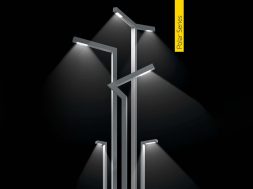Metros and Railways: A key factor for efficient transport and logistics

Apart from reducing the transit time, metros and railways provide employability, augment demand for goods and services, connect existing cities and give birth to newer ones.
A developing nation like India needs a robust transportation system which is affordable and offers the last mile connectivity. Hence the development of the railways and metros is key to the nation. This will not only allow development of satellite townships and far-off suburbs but also make way for economic development of the nation. Shashank Agarwal, MD, Salasar Techno Engineering Ltd, says, “Metros play a very significant role in the development of any economy. Especially in places with huge concentration of people, it is very important to have an efficient and quick way for their transportation. Metro is the answer to this problem. Subsequent ease of logistics bolsters the economy in a myriad of ways. Far off areas which have the potential to flourish are often considered unviable since there is no convenient mode of transportation. With MRTS like the metro companies can tap into a larger pool of manpower besides it will also give the corporates and the local population access to rapid transportation for business and other purposes.”
The construction of metros and allied bridges gives a massive impetus to employability too since they create employment for a lot of skilled professionals. Furthermore, it has also brought into focus the role of innovative construction techniques. Nagesh Veeturi, Executive Director – Civil, KEC International Ltd, says, “Metros and bridge projects have created great opportunities to develop innovative solutions for large scale constructions in the urban/specialised environment. The elevated viaduct superstructure and the structure of the stations can be constituted entirely from precast concrete elements. For bridge construction, different methodologies that can be employed include simple box, I-girder, box girder, segmental arch, balanced cantilever and cable-stayed bridges. The selection of methodologies depends on the span length, type of construction and material used (prestressed/RCC/steel). Certain key parameters must be considered to decide on the methodology and associated design of precast elements, to determine the success of the project in terms of speed and quality of construction, environmental impact, and aesthetic appeal of the structure, in addition to the cost and economic viability.”
A number of metro and railway projects are being executed across India of which some have also concluded. However, the rate of success in terms of ridership in some of the completed projects has been dismal. The Mumbai Monorail for example, has failed to attract ridership, the same can be said about the Hyderabad Metro. While the conundrum of ridership work continues in many areas like Mumbai Metro Line 12 which connects densely populated areas of Kalyan as also Dombivli, work continues at a snail’s pace. There were some doubts on the viability of the project even though in an April 2019 report MMRDA clearly pointed out that the Financial Internal Rate of Return (FIRR) for the project has been assessed as 6.00% (With additional PD income from 40 Ha land) whereas The Economic Internal Rate of Return (EIRR) works out to 14.51%. The same is the case with the Baranagar – Barrackpore Metro which was planned way back in 2011. So, it is essential to ensure efficient planning for such projects and ensure politics at all cost be ignored.
Arka Kanungo, Future Mobility Consultant, WSP says “The estimation of demand in a metro project involves a number of parameters and it is better to revisit them like every five years or 10 years, like an audit process. it is essential to revisit the numbers and rectify them, because these all these projects are capital intensive, and driven by the government. Private participation is also encouraged in these kinds of projects. In the Indian context however public participation into this will be the way forward is the key.”
Planning in railways and metros is not limited to the estimation of demand alone the design too matters. Ratan J Batliboi, Founder, RJB- CPL and EdEn-Educated Environments points outs “There’s a very key planning that is necessary and planning is not too technical. Once the layout, circulation and zoning are done, the hierarchy of public and private transport needs to be studied, then it’s a question of experts coming in. The MEP consultants, the in-house experts of the Indian railways with their incredible decades of experience are some of the crucial people involved in this process. This role of planning for people is very essential. In fact, when we did our first railway stations in the early or late 80s, this was the first time ever, when a private architectural firm was physically getting involved with the railways to do railway station design.”
Voicing a similar opinion, Mahendra Pawar, Director, 10 Zen Bulls Design and Build Studio says “For railway and metro projects to succeed in dense cities like Mumbai and the adjoining areas planning and designing is important. Macro level planning with a team of good planners is a key aspect. Connectivity across different areas within the city is essential else what we witness currently across different cities within India are patches of development. As far as transportation facilities like railways and metro is concerned end to end connectivity is required, only then can it transport people effectively from one end of the city to other. Such measures can reduce the traffic congestion in cities and ensure last mile connectivity. In London there are many streets that are not more than 15 feet wide, even then, it doesn’t witness no bottlenecks or traffic build up and all this is a result of efficient planning and design.”
Metros and Railways will continue to dominate the transportation scene in India where urbanism is akin to a continuous process. So, it is essential to ensure that successive governments in the nation work in tandem to ensure such critical projects are executed timely and without delay. It will go a long way in promoting the fact that we are keen to offer the citizens a robust transportation system which won’t cost a fortune and also save time required for transit.
Cookie Consent
We use cookies to personalize your experience. By continuing to visit this website you agree to our Terms & Conditions, Privacy Policy and Cookie Policy.









